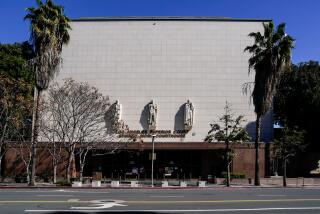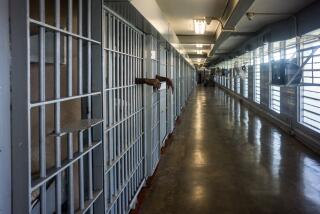A Jury of One’s Peers
- Share via
As part of guaranteeing people their constitutional right to a trial by a jury of their peers, courts require a random selection of jurors using an unbiased system that is not intended to exclude anyone.
Orange County uses such a method and source. But does it always produce a jury made up of a defendant’s peers? The question has been raised before in Orange County. It is being raised again now by the county public defender’s office in a case in which the state Supreme Court overturned the death sentence for a Latino defendant convicted of murder. The defendant now faces retrial on the penalty phase, but his attorneys contend that he cannot get a fair retrial because Latinos are underrepresented on Orange County juries.
That’s true in some instances, but it probably is less the case than it was several years ago, when the county drew prospective jurors’ names only from the voter registration rolls.
A survey in the mid-1970s disclosed that the voter registration rolls were light not only of Latinos but also of people under 25, single people, students, people in the lower-income groups and people with less than a high school education. That left a lot of criminal defendants feeling unrepresented.
To broaden its pool of potential jurors, the county added the state Department of Motor Vehicle lists to the voter rolls. It is not a perfect list but it is an improvement.
For instance, a much truer cross-section could be obtained by using the Social Security roll, but the federal government won’t release that for use in juror selection.
The present system sometimes breaks down because only 1% of the county population is black and, according to the last federal census in 1980, 14.5% Latino. That doesn’t always ensure that there will be balance in the jury box.
The public defender’s office is seeking the names, addresses and telephone numbers of about 36,000 people called for jury duty last March, April and May, in an effort to show that there is an underrepresentation of Latinos in the selection process. But even one defense attorney says that among his recent trials, two had 3% Latino representation on the jury and one had 14%.
That would indicate not so much an overt effort to discriminate as much as an uneven system that can easily be thrown out of proportion by not having as many minorities in a given pool as there are minority defendants facing trial.
We have confidence in the system that historically has produced juries that are impartial and fair, regardless of their ethnic or racial mix. But that does not diminish the need for aggressive efforts to select panels that come as close as possible to providing Orange County defendants juries of their peers so that they not only receive a fair and impartial verdict, but also believe that they did.
More to Read
Sign up for Essential California
The most important California stories and recommendations in your inbox every morning.
You may occasionally receive promotional content from the Los Angeles Times.













![Vista, California-Apri 2, 2025-Hours after undergoing dental surgery a 9-year-old girl was found unresponsive in her home, officials are investigating what caused her death. On March 18, Silvanna Moreno was placed under anesthesia for a dental surgery at Dreamtime Dentistry, a dental facility that "strive[s] to be the premier office for sedation dentistry in Vitsa, CA. (Google Maps)](https://ca-times.brightspotcdn.com/dims4/default/07a58b2/2147483647/strip/true/crop/2016x1344+29+0/resize/840x560!/quality/75/?url=https%3A%2F%2Fcalifornia-times-brightspot.s3.amazonaws.com%2F78%2Ffd%2F9bbf9b62489fa209f9c67df2e472%2Fla-me-dreamtime-dentist-01.jpg)